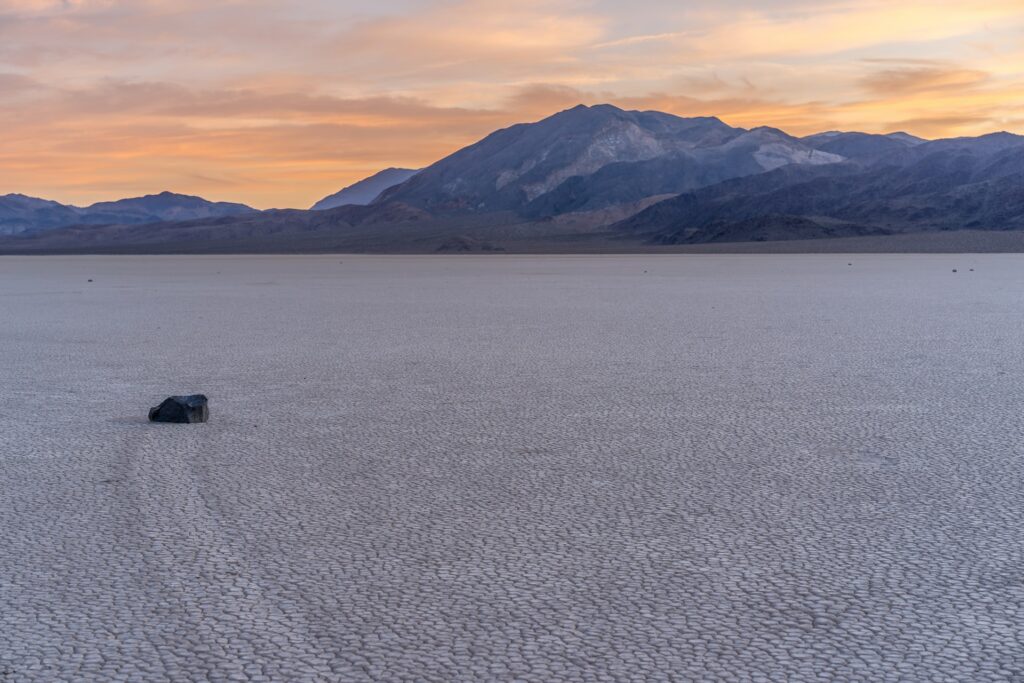
California is home to both some of the hottest and coldest places in the US, but Death Valley truly takes the cake when it comes to heat! In fact, Death Valley has routinely been called the hottest place on earth in the summer months. Even in the winter, things don’t get comfortable for all but the most seasoned wilderness experts.
At 282 feet or 86 m below sea level, Death Valley is characterized by a dry, sandy desert and mountain barricades that box visitors (and heat) within. Death Valley’s – and the world’s – hottest temperature ever recorded was clocked on July 10, 1913, at 134 degrees Fahrenheit or 57 degrees Celsius at Furnace Creek – a census designated place in Death Valley.
That’s quite hot! But just why is Death Valley so hot compared to other deserts or on the planet? Let’s break down this question and more.
Factors that Influence Death Valley’s Heat
Death Valley is so oppressively hot not because of any one specific reason but because several factors combine to create a unique environment unlike any other found on earth. Let’s break down why Death Valley is so hot in detail.
Valley Shape
For starters, the shape of Death Valley itself may contribute to the oppressive heat that never seems to go away. Remember, Death Valley is, well, a valley! It’s long and narrow and features high, steep mountain ranges on all sides.
How does this affect heat? As you may know from your elementary natural sciences class in school, hot air rises under normal circumstances. Then it condenses, cools off, and goes back down (sometimes bringing rain and snow with it).
But because the mountains are so tall (relative to Death Valley’s below sea level floor, that is) the air cools down before it reaches the peaks and it can cross over into other parts of California.
As a result, the cool air then sinks back to the valley floor and gets hot once again. As a result, Death Valley is trapped in a constant convection oven of a landscape. The air never escapes or goes high enough to really become cool, especially when you add the sun into the mix. Then the superheated air blows through the valley and things get even worse.
Nearby Mountains
As noted above, Death Valley’s mountains are pretty high since the floor is so low (86 m below sea level, in fact). The steep mountains don’t make things any easier, trapping hot air within the valley for long periods of time and preventing moisture from descending easily.
Plus, the mountains make it very hard to get out of Death Valley if you are ever trapped there. That’s why you should only ever visit Death Valley when you are prepared, visit during the right time of year, and have the right equipment.
Lack of Rainfall
Also contributing to Death Valley’s endless heat is its lack of rainfall. In fact, this superhot hellscape only gets about 2 inches of rain per year. That’s far less than what most other deserts receive worldwide, which usually average around 10 inches of rain per year.
Because of this, there’s no chance for water to accumulate and suck up the heat or reflect sunlight. All that heat just goes into the sand and circulates because of the above-mentioned valley shape and tall mountains.
Little Vegetation
Lastly, Death Valley is home to precious little vegetation. Normally, vegetation absorbs the sun’s rays through photosynthesis. While this has a small effect on overall heat for an area, it does play a role in how hot a place will be in the long term.
Since there isn’t enough rainfall to contribute to more green plants, it’s unlikely that Death Valley will ever become cooler (at least soon!).
Why is Death Valley so Dry?
The inherent dryness of Death Valley contributes to its ongoing heat problems as well, although this is a separate factor in the Valley’s inhospitable nature.
In a nutshell, any winter storms that move inland from the Pacific Ocean have to cross over the Sierra Nevada and Rocky Mountains to keep going eastward. The clouds go up as they collect the moisture, then cool down and the moisture falls back to earth as snow or rain on the western side of the above-mentioned mountain ranges.
But by the time those clouds reach the eastern side of the mountains, they don’t have as much moisture to spend. This can create a so-called “dry rain shadow” which creates occasional clouds for Death Valley but doesn’t provide much moisture for the place’s few living creatures to work with.
Even worse, Death Valley has a whopping four separate mountain ranges that lie between it and the ocean. As a result, it’s also impossible for any meaningful moisture to reach the Valley. Don’t forget that Death Valley is further bordered by the Mojave Desert.
All in all, Death Valley suffers from:
- Extreme positioning, both in terms of elevation and surrounding landscape features
- Weather patterns that contribute to heat and dryness
- A lack of starting vegetation that exacerbates the heat problems
Death Valley Can Also Be Cold
Death Valley might be primarily known for its intense heat, but it’s also one of the coldest places in California and throughout the country!
It’s true that, on most nights, the temperature doesn’t go below 85°F or so. But in the winter and at night, Death Valley can reach temperatures of 15°F or -10°C or so. This isn’t as cold as some of the temperatures you’ll see in northern, snow-covered locations, of course, but it goes to show the extreme diversity in temperatures at this unique California location.
How Long is the Summer in Death Valley?
Death Valley’s longest summer on record was 154 days, in which the maximum temperature reached 100°F or above. This occurred in 2001. However, most Death Valley summers last for 100 days or so, though it’s not uncommon for summer temperatures to be above 100°F for a month or more at a time.
For example, the summer of 1996 saw Death Valley experience 40 days with temperatures of over 120°F. Another 105 days saw temperatures of over 110°F.
Meanwhile, the summer of 1917 had a whopping 43 consecutive days that included a high temperature of 120°F or even more.
Summary
Ultimately, Death Valley is so hot because of a combination of local and surrounding geographic features. Because of Death Valley’s unique position, it’s unlikely that its temperature will ever become more mild or hospitable in the near future. This is doubly true considering climate change and rising global temperatures.
However, the heat doesn’t mean that Death Valley isn’t a great place to hike or see nature. In fact, extreme hikers or backpackers like to visit Death Valley for the challenge and for the chance to see some unique animals that can’t be found anywhere else, including certain species of lizards, birds, and insects.
But if you want to explore Death Valley, be sure to do so with a guide or with plenty of experience under your belt. You’ll also want to make sure you bring the right gear, like survival food kits, tents and other shelters, and so on.
